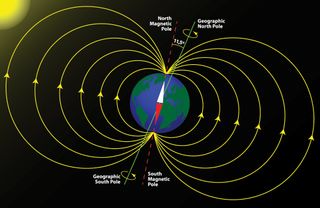As I continue to learn, little by little, about collaborative problem solving and trauma-informed care - thanks to great UMFS trainers and well-educated counselors in my life - I frequently encounter the metaphor "upstairs brain/ downstairs brain." It's a model used to explain why reasoning, logical consequences, and such discipline/teaching frameworks don't work very well for kids who are constantly dealing with stress and trauma. The downstairs brain contains the "basic" survival and life functions, while the upstairs brain contains the "higher" reasoning and linguistic capabilities. If you consistently face stress or trauma, especially in your early years of life, then you kinda get stuck in a state of stress response: fight, flight, freeze, so forth. The "upstairs" functions aren't very accessible to you when you're running for cover and screaming downstairs. And even when you can make it upstairs, you may not be as familiar with the floor-plan as someone who hasn't had to deal with the same types of toxic, chronic stress.
From what I've heard, this metaphor has been very successful. Kids and adults both grasp it, and its been especially helpful to counselors trying to persuade parents and care-takers to focus on calming strategies and trust-building before teaching "lessons" and such.
But...of course I have a but, as always, a but...
Isn't this another iteration of the mind/body, rational/animal, logic/emotion, male/female hierarchy that we've believed for so long, in the west at least? Besides, aren't reason and language and other advanced skills just a small, relatively recent additional room in the house of the brain? Or maybe more like various pieces of furniture and decoration throughout the house? I don't think "upstairs brain" gets its own floor, with a similar amount of square footage as "downstairs brain." If we have to describe our brain as split between reason and everything else, I like Haidt's metaphor of the elephant with a person riding it, a person who evolved to serve the elephant, not the other way around.
Monday, March 16, 2020
Wednesday, March 4, 2020
Models for Sex/Sexuality/Gender
(2/17/20)
For the past couple days, as my mind wandered during the sermon or during dull moments at my desk, I've been trying to find a good pictorial model or allegory for human sex/sexuality/gender.
I want something that expresses the bi-modal or bi-nodal nature as well as the constellated individuality or brilliant spectrum nature, and that doesn't conceptually privilege or emphasize certain areas or points of the picture. I guess the question is, can you draw a picture with two nodes that doesn't necessarily pronounce those nodes?
At first I thought of a magnetic field

Like, the field is defined by the poles, but that's not really what the field is. I dunno what I'm talking about.
Or then the rainbow

Which is already associated with diversity, but also has two endpoints. But those endpoints aren't actually places, they are concepts, in the same way that sex/gender is a generalized description of lots of specific facts/experience/ideas/feelings/etc.
I guess I'm really excited by the description of gender and sex that Kandel laid out in his book. I didn't understand how all the interrelations worked, but I visualize it as a flow-chart, of sorts, with five genres of sex-gender identification.
For the past couple days, as my mind wandered during the sermon or during dull moments at my desk, I've been trying to find a good pictorial model or allegory for human sex/sexuality/gender.
I want something that expresses the bi-modal or bi-nodal nature as well as the constellated individuality or brilliant spectrum nature, and that doesn't conceptually privilege or emphasize certain areas or points of the picture. I guess the question is, can you draw a picture with two nodes that doesn't necessarily pronounce those nodes?
At first I thought of a magnetic field

Like, the field is defined by the poles, but that's not really what the field is. I dunno what I'm talking about.
Or then the rainbow

Which is already associated with diversity, but also has two endpoints. But those endpoints aren't actually places, they are concepts, in the same way that sex/gender is a generalized description of lots of specific facts/experience/ideas/feelings/etc.
I guess I'm really excited by the description of gender and sex that Kandel laid out in his book. I didn't understand how all the interrelations worked, but I visualize it as a flow-chart, of sorts, with five genres of sex-gender identification.
Subscribe to:
Comments (Atom)
